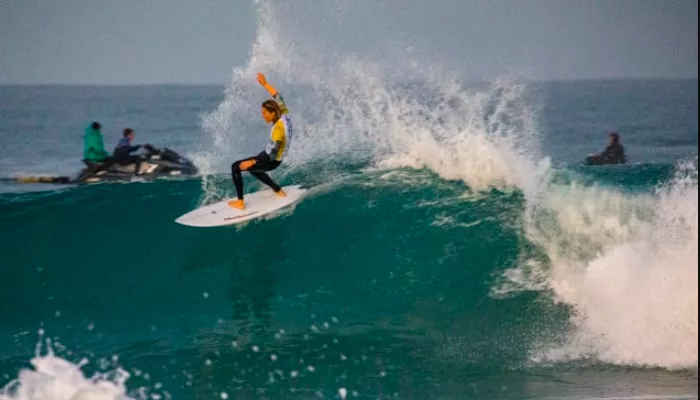Hawaiian surfer and chemist Dr. Cliff Kapono has been sharing fascinating scientific insights into two key aspects of surfing: the physics behind acceleration in maneuvers like the highline and bottom turn, and the most common surf injuries. Through his research-backed observations, Kapono has shed light on the mechanics that drive surfers’ speed and the bodily risks they face.
Kapono’s scientific journey began with a curiosity about which maneuver—highline or bottom turn—would propel a surfer faster across a breaking wave. To find the answer, he turned to research by surfer and physicist Nick Pizzo of the University of California, San Diego. In a 2017 study titled “Surfing Surface Gravity Waves,” published in the Journal of Fluid Mechanics, Pizzo developed criteria for understanding how surfers interact with breaking waves. The study focused on identifying the optimal regions on a wave where velocity and acceleration are highest.
Pizzo’s research concluded that the upper region of a wave, just below the crest, generates the greatest acceleration. “Molecules on the upper region of a forward face of a wave breaking just under the crest possess the highest values for both velocity and acceleration,” Kapono explained. As a result, surfers traveling along the highline, situated in this high-velocity region, gain more speed than those executing a bottom turn, which takes them out of this optimal zone. While each wave has its own nuances based on bathymetry and depth, the highline generally provides more opportunity for acceleration.
In addition to exploring wave dynamics, Kapono also turned his attention to the issue of surf injuries. Curious about which body parts are most vulnerable to injury, Kapono referred to recent data from the University of Miami Miller School of Medicine. Published in February 2025 in Archives of Dermatological Research, this study analyzed data from the National Electronic Injury Surveillance System (NEISS) between 2021 and 2023. The study found that over half (54%) of emergency department visits related to surfing injuries involved head or neck injuries. Leg injuries accounted for 23%, while 15% were attributed to injuries to the arms and hands. Smaller percentages were linked to chest (4.8%) and abdominal (2.8%) injuries. Though the sample size was relatively small, the NEISS database pulls data from 100 hospitals across the United States, offering a reliable snapshot of national trends.
Kapono emphasized the importance of understanding these injury patterns. “Hopefully, that helps us get a representation and understanding of if there are certain parts of our body that are more prone to injury and help us take the necessary action to protect ourselves,” he said.
Kapono has carved out a niche as a science communicator in the surfing world. By blending his expertise as a high-level surfer and trained chemist, he is able to make complex scientific concepts accessible to the surf community. Through his work with The Mega Lab and beyond, Kapono is contributing to a growing body of knowledge that helps surfers understand the science behind their sport—and, crucially, how to reduce injury risk while enjoying it.

